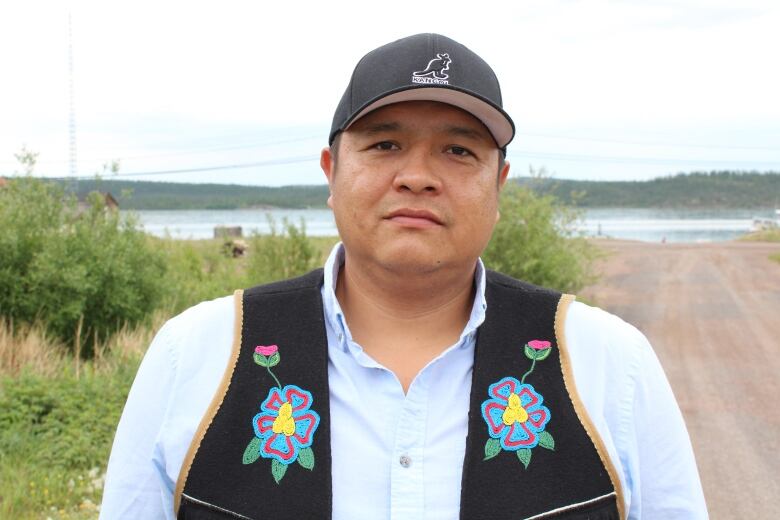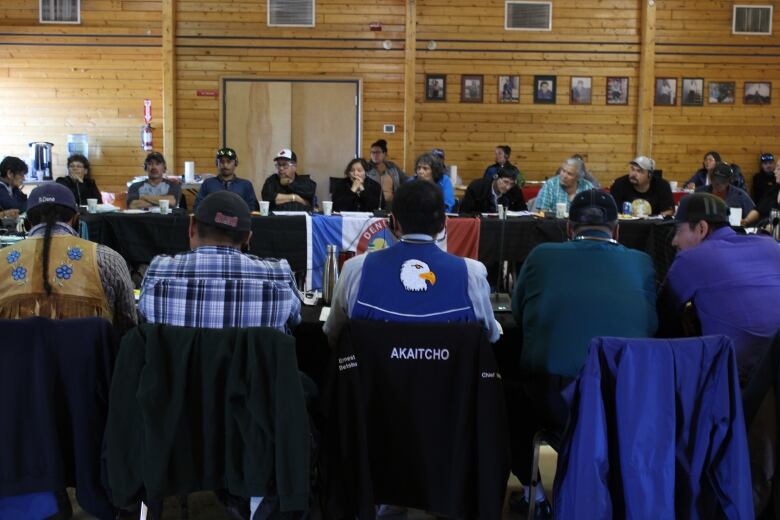'Nothing was being done': N.W.T. First Nation developing caribou stewardship plan
The plan includes eight full-time, year-round caribou monitoring jobs

The Lutsel K'e Dene First Nation is developinga new caribou stewardship plan in response to the recent dramatic decline in Bathurst caribou.
The herd shrank by close to 60per cent in three years, according to the latest N.W.T. Department of Environment caribou population survey.The Lutsel K'e Dene First Nation has always relied on cariboufor subsistence.
The plan would see eight full-time monitoring positions created to track caribou throughout the year. Currently, the First Nation employs two full-time monitors, along with four rotating monitors during the winter.
"We just felt like we needed to take the lead role at this. Nothing was being done," said Lutselk'e Chief Darryl Marlowe, adding he hopes the plan is used across all the Akaitcho First Nations.

The plan was discussed during the annual Akaitcho assembly, which was held in Lutselk'e, N.W.T., from July 9 to 11.
"Our elders have always managed the caribou," Marlowe said. "We never ever had problems like we do today."
Over-hunting contributes to caribou decline, chief says
Marlowe said a big factor contributing to the rapid decline in caribou numbers is that more people are wasting meat, while trucks and snowmobiles make it easier to transport more harvested animals.
According to Marlowe, Lutsel K'eDene First Nationmonitors see people harvesting 20 to 30 caribou at a time. On one occasion they saw about 40 trucks lined up to hunt caribou on nearby diamond mine ice roads.

"How much caribou is that?" he said.
Marlowe said some efforts made by the territorial government to protect caribou actually make it easier to hunt them. The Mobile Core Bathurst Caribou Management Zoneis meant to help conserve caribou numbers by regularly updating where hunting is prohibited during the hunting season.
But Marlowe said this just makesit easier for some hunters to track caribou.
He said that's because some hunters have treaty rights to hunt, even in restricted zones. The moving zone updates them to where the caribou are at all times.
'Traditional teaching is going to be lost forever'
Marlowe said he and many others in his community are worried about what they're leaving behind for their youth.
"The way our ancestors have thrived and lived off and harvested the caribou for so many yearsthousands and thousands of yearsthat part of our traditional teaching is going to be lost forever if we don't do anything," he said.

"They don't necessarily value the ways our elders used to harvest, and that's one thing that we want to try to bring back and remind everyone of the respectful hunting practices."
Marlowe said the Lutsel K'e Dene First Nation is working on getting money to support the proposedprogram.












_(720p).jpg)


 OFFICIAL HD MUSIC VIDEO.jpg)
.jpg)



























































































